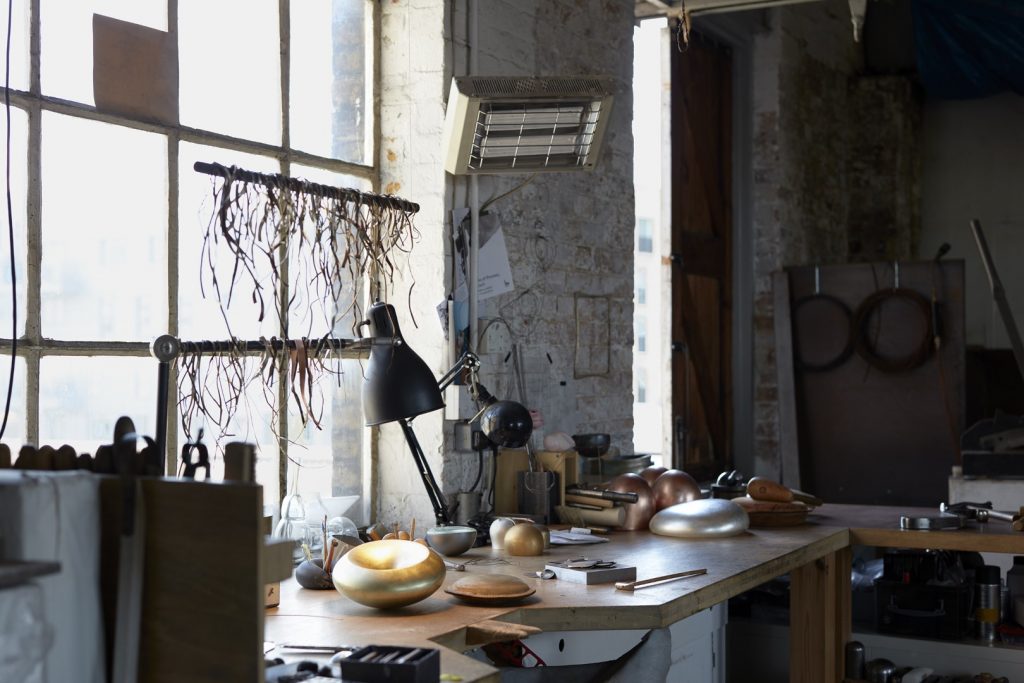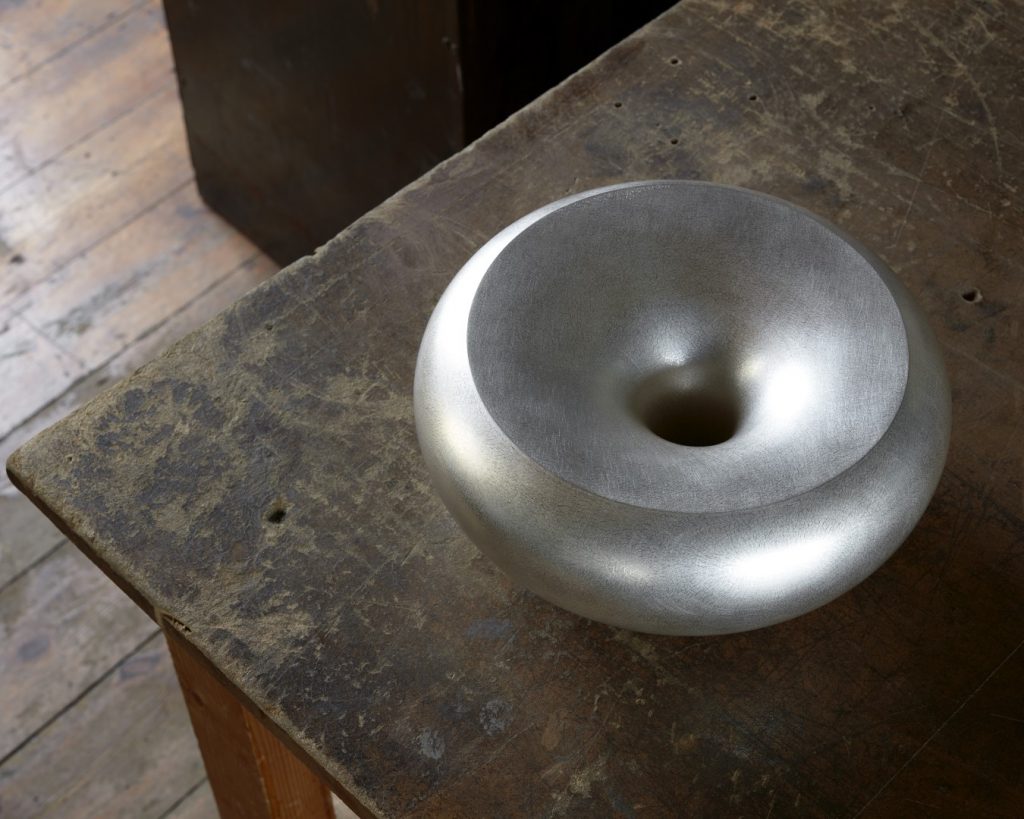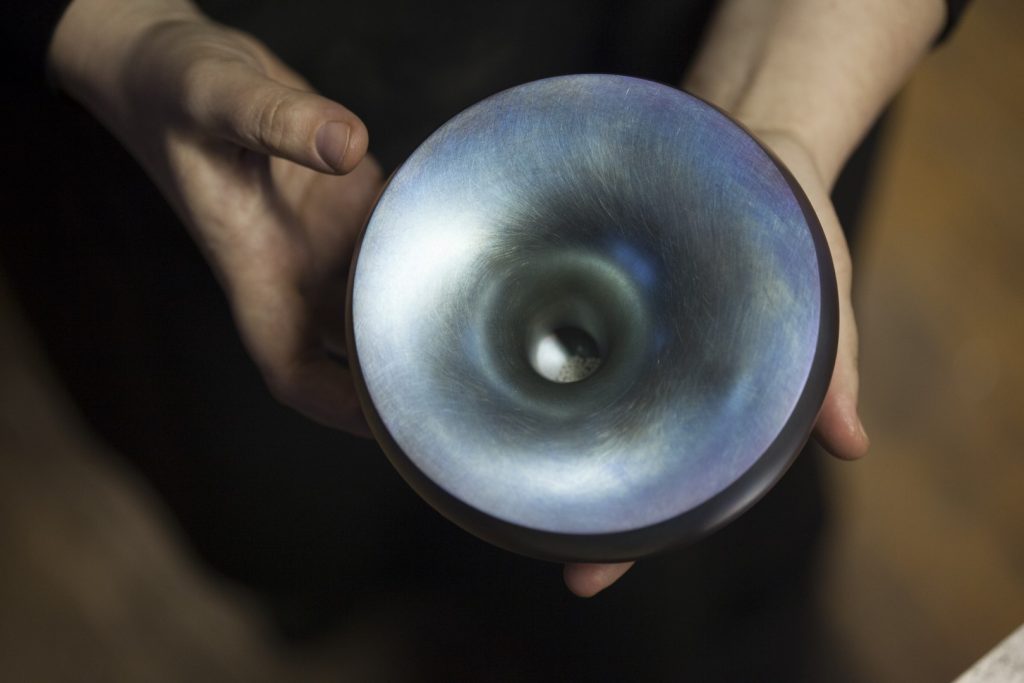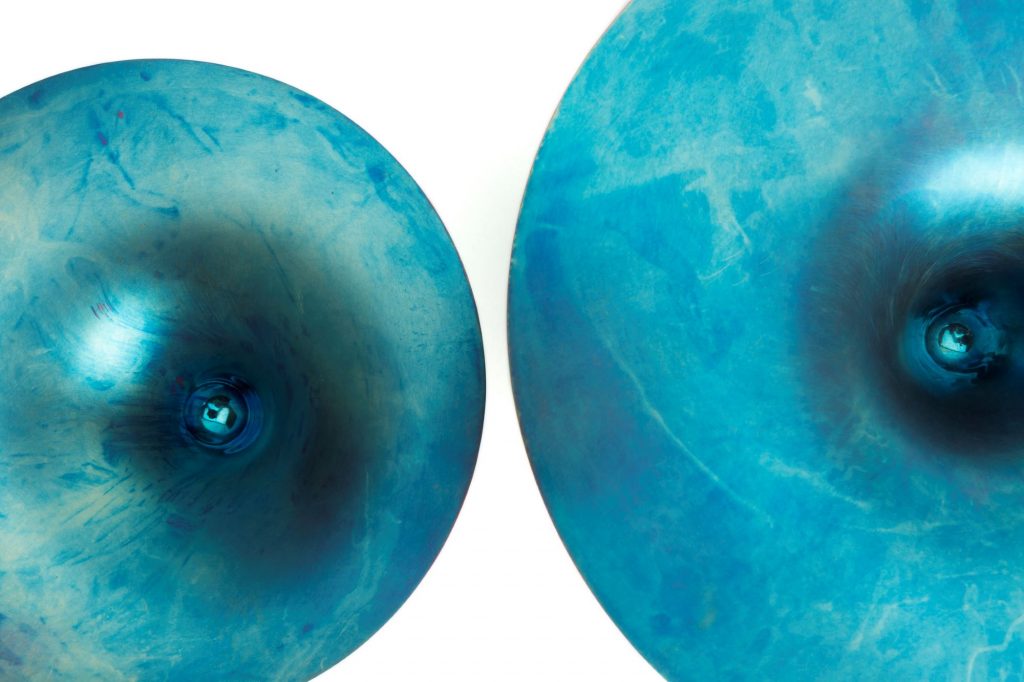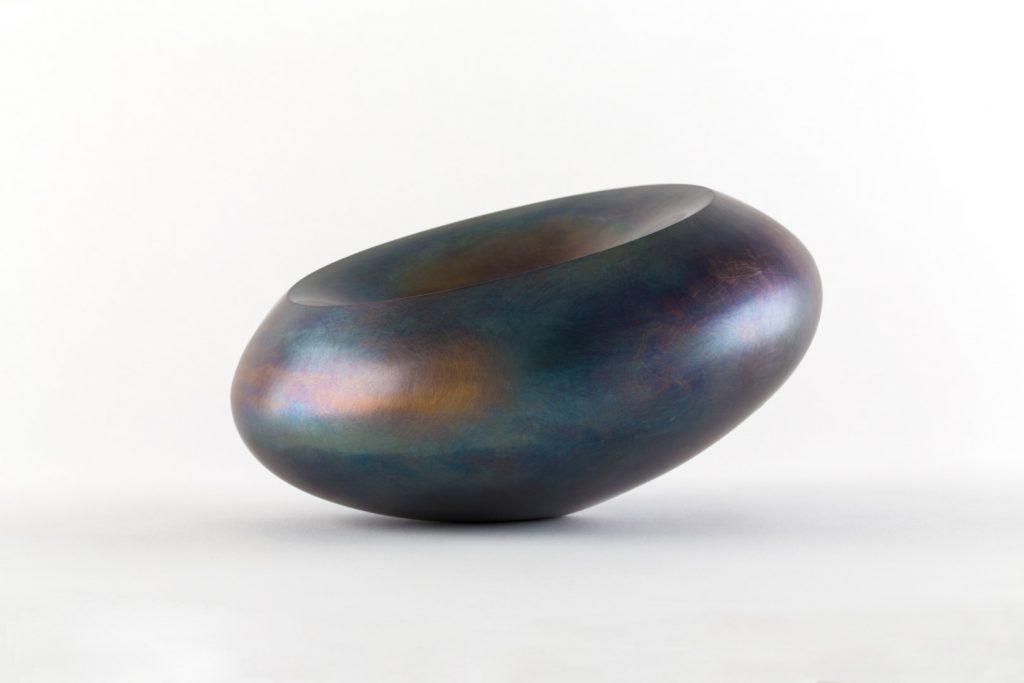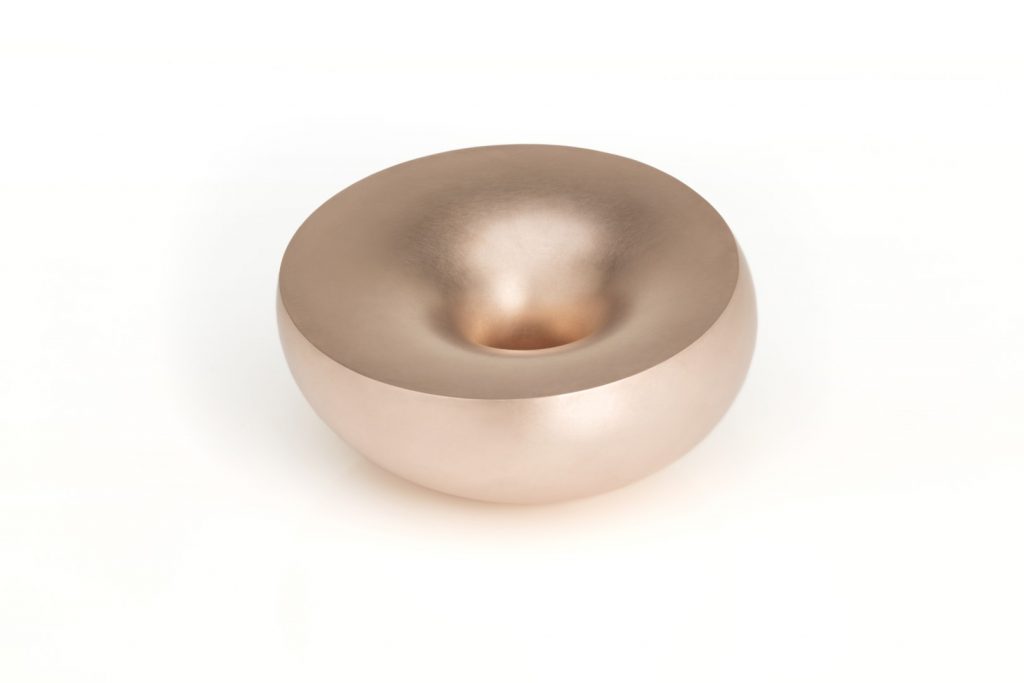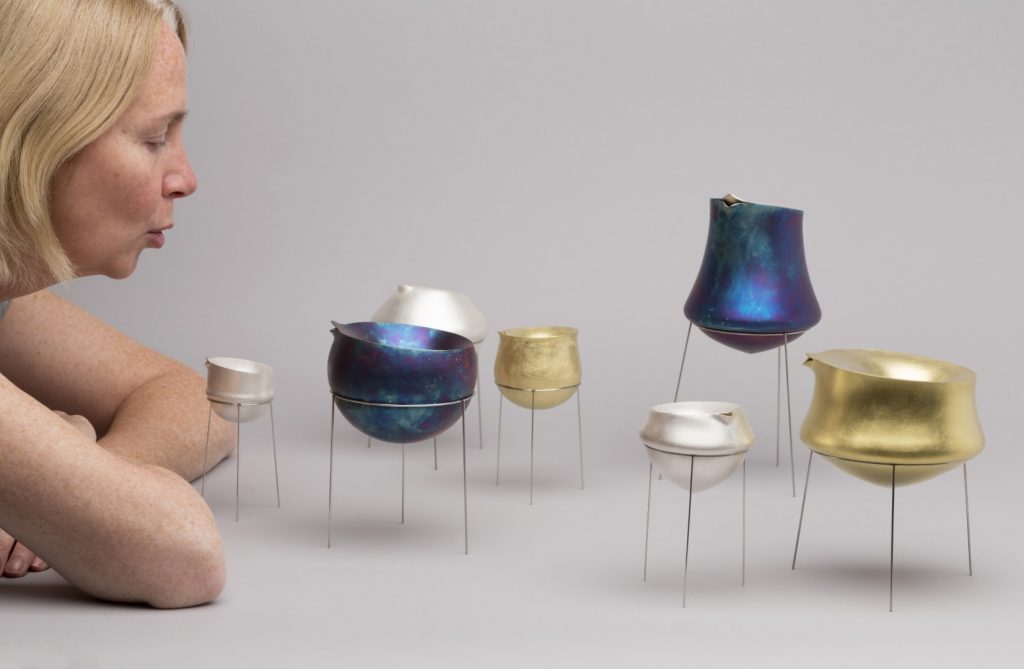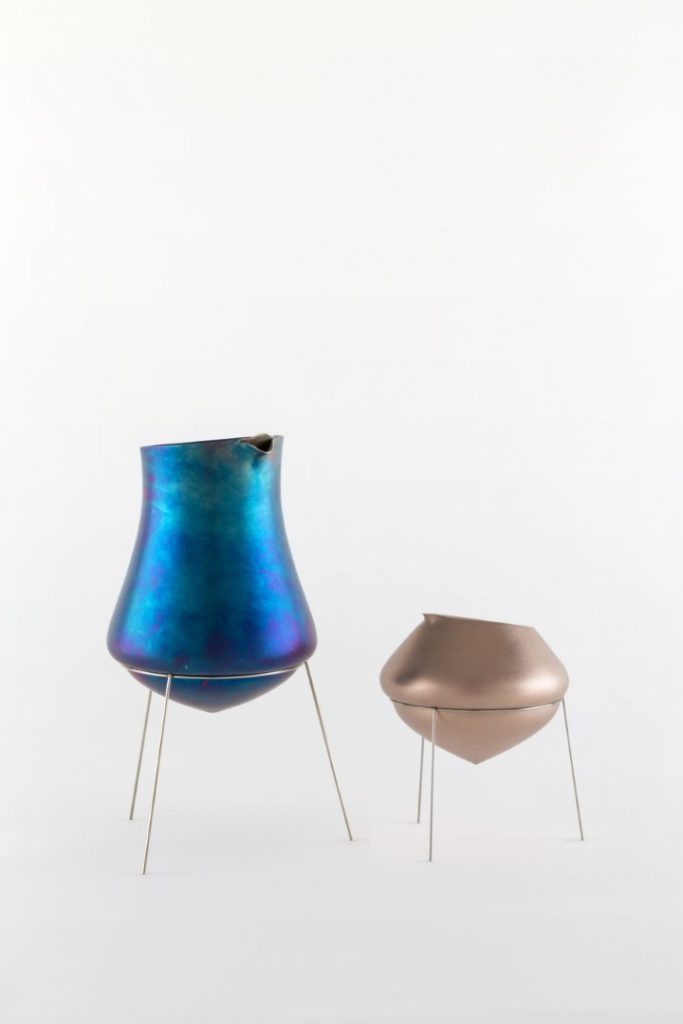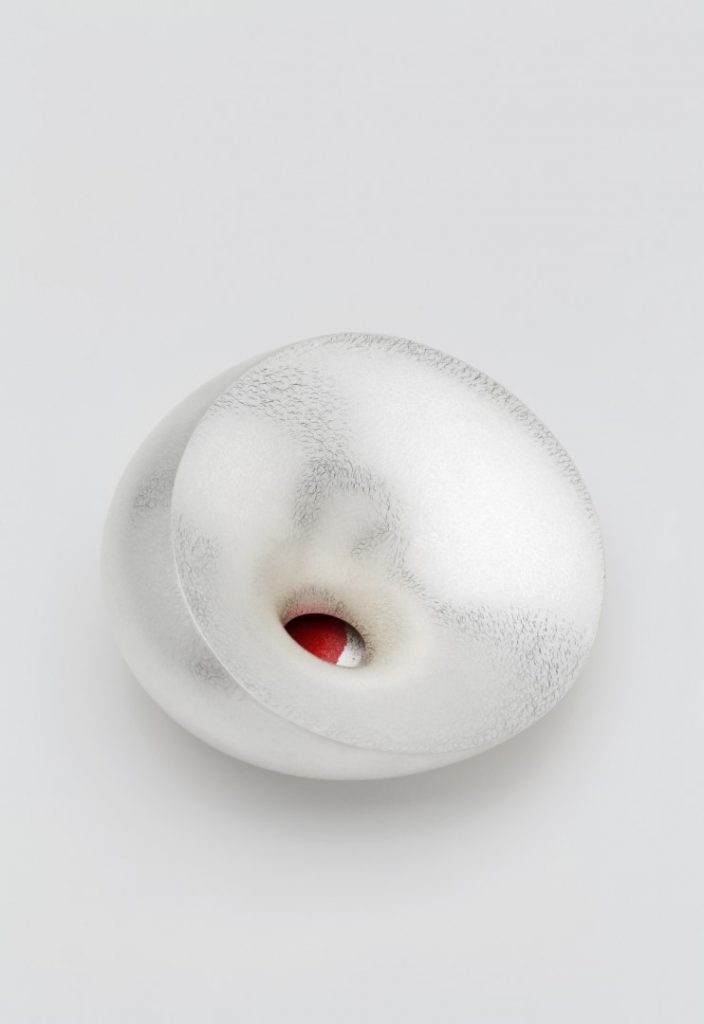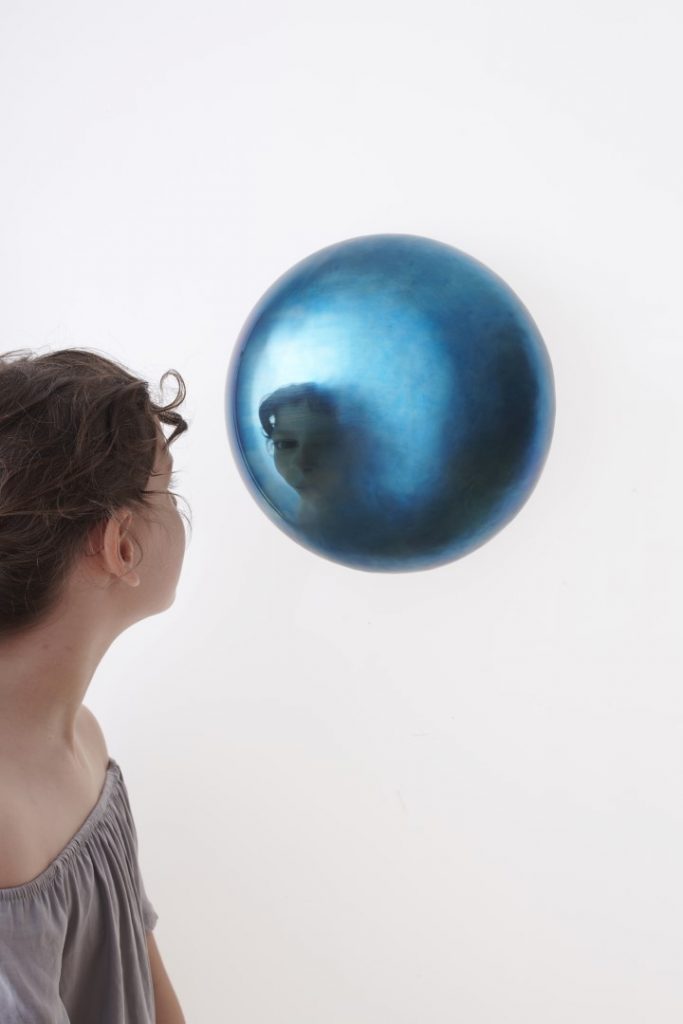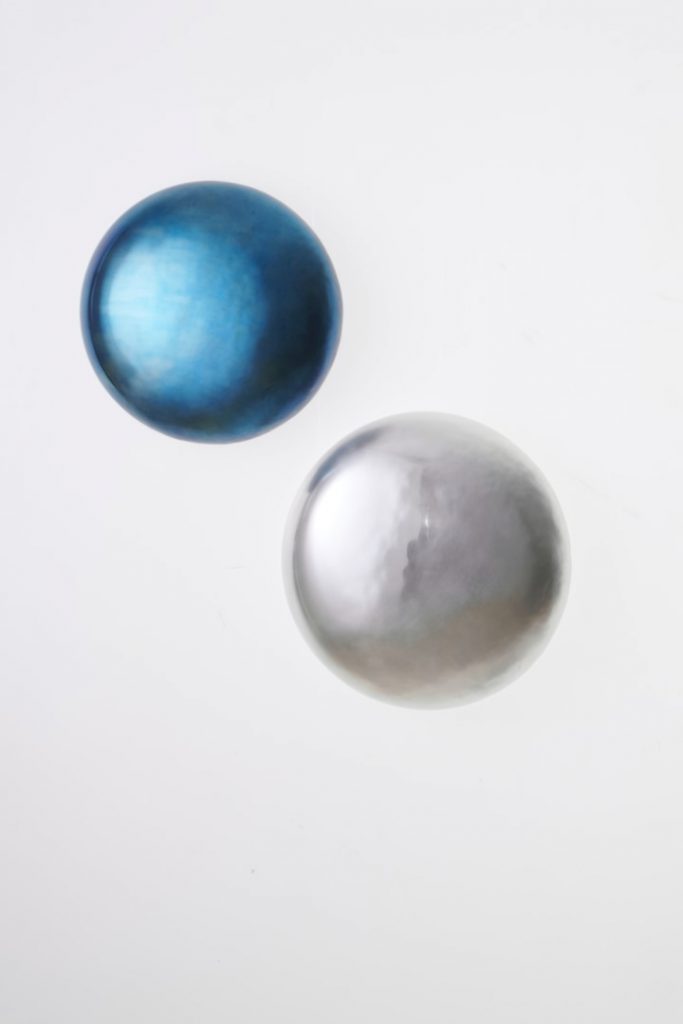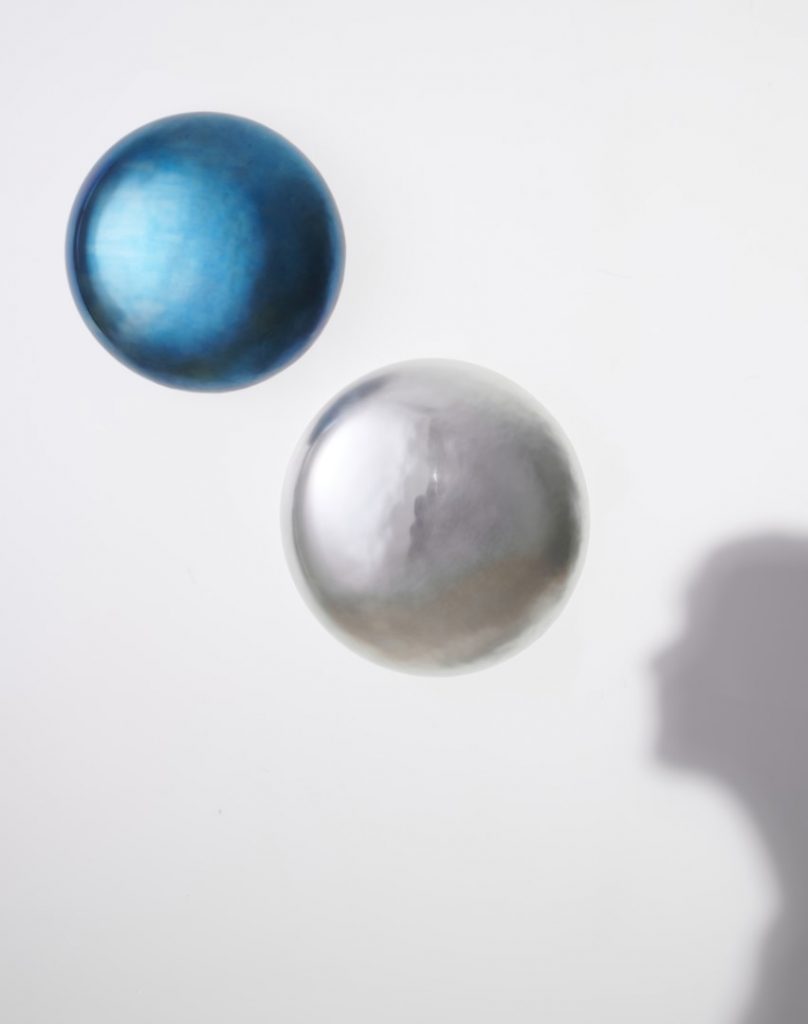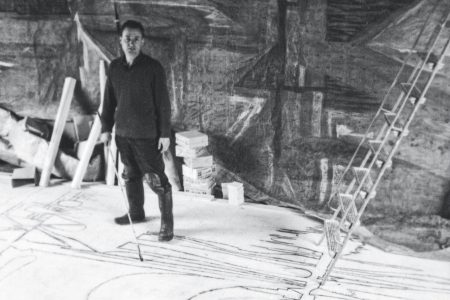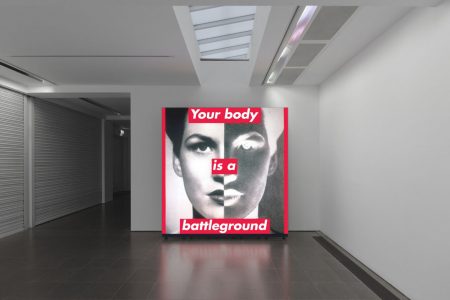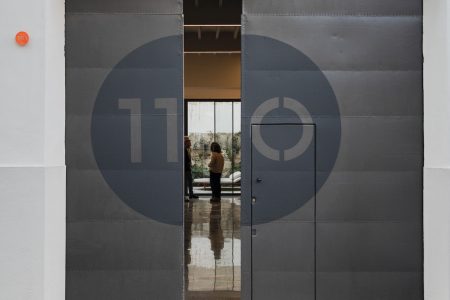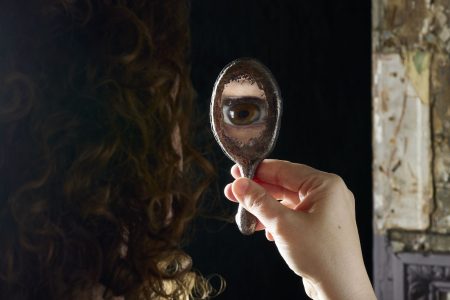Adi Toch: Invoking a Sensorial Experience
TLmag caught up with metal artist Adi Toch to talk about her fascination with sound, how it’s incorporated itself within her work, the essence of performativity embedded in her practice and creating objects that intentionally “misbehave”.
Starting with a flat metal sheet, Adi Toch forms and contorts metal materials into hollow objects using hammers and other metalworking tools. Throughout this labour intensive process, the metals communicate with her through both visual and sensorial cues – to which she listens to intently; from the clanks of the hammer as it makes its mark to the caresses of sandpaper over the surface as the layers of fine scratches merge into a satin finish. Whether it be by echoing the sounds of their creation or reacting to words directed to them, the responsive vessels that Adi creates introduce a performative quality to the spaces they find themselves in – offering viewers a renewed awareness of their effect on the objects surrounding them. Having won the European Prize for Applied Arts last year, TLmag caught up with Adi to talk about her fascination with sound, how it’s incorporated itself within her work, the essence of performativity embedded in her practice and creating objects that intentionally “misbehave”.
TLmag: You’ve said about your process that you listen to your materials instead of “just” working with them – resulting in unique pieces that offer a renewed appeal to the senses. What’s your first memory of experiencing metal the way you do now?
Adi Toch (AT): I fell in love with metal when I was 14 while working during the summer holiday, as an apprentice to a jeweller. I was captivated by the alchemy of turning solid into liquid and by the process of forming metal. I was surprised to find how malleable and communicative metal can be, even though it is perceived as rigid. Each metal has a different character– my favourite is probably silver. I am interested in its ability to change appearance through different finishes. There is a dialogue with metal similar to a conversation with an old friend. It is a vocal material and it will indicate how happy it is and whether you can keep working it by changing its tone. So listening is an innate part of the process. My occupation with sound stems from the musicality of metal. ‘Whispering Vessels’ for example, are a series of objects that sit somewhere between domestic vessels like bowls to percussion instruments. Each hollow, double-layered vessel contains loose gemstones and produces different sounds when being handled.
TLmag: A strong element in your work is the performative aspect, or better yet the performative craft, that goes hand in hand with your metalworking. Could you tell us a bit more about that?
AT: I was always interested in the interaction with the viewer since my BA studies and throughout my masters. Metal reacts to touch and temperature as well as having sonic and reflective qualities, and these characteristics inform my making. I make objects that engage the viewer through a sensorial experience through play in perception, movement or investigation of embodied experience. I’m interested in the relationships that people form with objects around them and through my work, I sometimes explore how people react when objects misbehave – for example, in the installation ‘Talk to Me’ where viewers were encouraged to talk to the vessels and trigger a response.
TLmag: Some of your most significant projects, ‘Receptive Vessels’ and ‘Talk to Me’, imbue your objects with a kind of spirit as they react to their immediate environment. How did this come about?
AT: The project actually began with ‘Vessels on Stilts’, which I made for a group exhibition at the V&A a few years ago. They were a response to museum displays of ancient pots, which, due to their rounded or pointy bottoms, are placed on tripod stands. The reason these pots didn’t have a flat bottom, like most of our objects, do now, is because they were “pre-tables”. I started looking at the way these vessels were displayed and felt there was something anthropomorphic about them with their added stilts. I thought it would be interesting to explore the relationship between the objects and these stands and try to integrate the stand into the object. I wanted to make the stilts look like they were dainty or fragile, even though they were in fact very strong as they were made of stainless steel. The weight of the silver vessels on top of the slender legs triggered movement and the objects ended up reacting to vibrations coming from the floor: people walked by them, and the pieces started moving. Unfortunately, when the work was installed at the V&A, they were placed into a robust cabinet that didn’t allow any vibrations to come through – the pieces ended up being very static. It made me think about potential interactions in these spaces, and how people look at displays in museums and galleries and the hushed environment. I wanted to invite people to speak up and interact.
I got the chance to execute this idea at Collect 2017 with ‘Receptive Vessels’. I was collaborating with sound technicians to translate human voice into movement. The most valuable thing I got out of the installation was the documentation, the films that I made documented how people interacted with the objects. There was a lot of laughter, and singing too! Some people got quite upset I think there’s an element of fear when something unexpected happens – a few people refused to talk to them, which was really interesting in itself.
TLmag: I suppose the whole interaction gives people a heightened awareness of the things that are around them – and the effect that their energy has on seemingly “unaware” objects…
AT: Exactly. And continuing that thought about the potential sentient object, in a following project, I recorded sounds of the making process and these were played every time someone touched one of the vessels. I was questioning an idea that objects could have memories, for example, is it possible for a table to remember the tree it is made of? I’m also interested in the life of objects once they find a new home and curious to see where they end up – I often ask clients to send me a photo of the space that they’re in or going to be in.
TLmag: You recently made a set of ‘Plump Wall Objects’ for Spazio Nobile for Brussels Gallery Weekend, which was also made out of silver. Could you tell us a bit more about how these objects came about? It’s a bit of a change from the usual vessels and containers that you create…
AT: The pieces are both made of silver, although one has a more ambiguous look with blue patination. That’s another thing I love about silver: it’s like a chameleon. It could be finished to look almost like porcelain (white) or very shiny and reflective, and it can be coloured chemically for a totally ambiguous feel. It’s an engaging and versatile material.
Plump Objects are inspired by Renaissance convex mirrors, used to brighten domestic spaces. and in a more contemporary setting, these mirrors are used in the (London) Underground and train stations. This work investigates a relatively new territory for me, of the wall, but it is still in the realm of interactive craft. The surface gradually changes from matte – to satin – to highly polished and the soft form, which isn’t perfectly round, creates a distorted reflection. They invite the viewer to move around and explore how they reflect their surroundings.
TLmag: You’ve been working with metals for more than a decade now (if we are to take your graduation as a “starting point”). How do you continue to challenge yourself and develop your craft?
AT: I find inspiration from looking around me, observing how people interact with objects. I have a deep interest in vessels and containers and how they shape our perception of the world through the division of inside and outside. Historical objects are also a great inspiration, I’m interested in archaeological artefacts from the Mediterranean and that feeds into my work. And then making always triggers more making… When I’m halfway through one project I’m already thinking of the next one. I try to challenge myself with new techniques or new questions. An object is for me a tangible form of an answer to a question or a problem.
Cover Photo: Adi Toch by Thom Atkinson.
